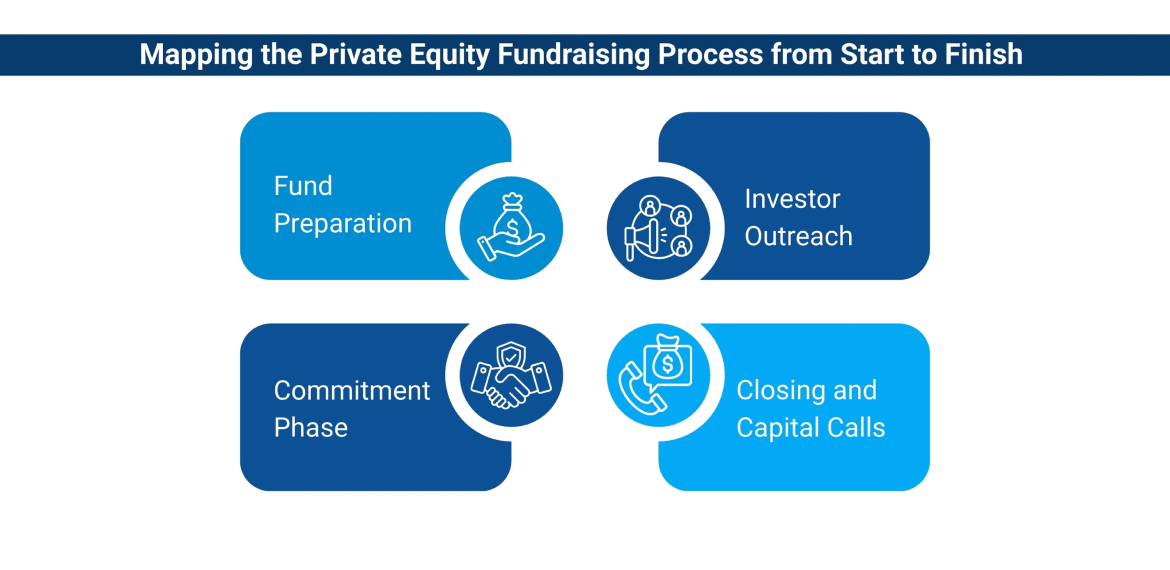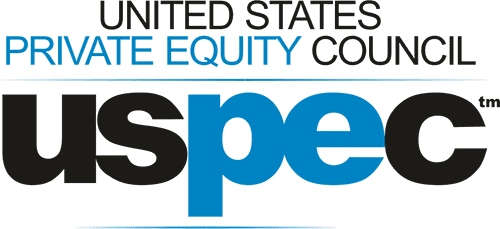Introduction
In the world of private markets, no growth story begins without capital. The raising of money by a private equity fund is much more than the gathering of commitments, but is about building trust, demonstrating discipline, and offering a structure that investors can identify with. The procedure requires clarity, transparency, and accuracy of each of the stages. This discipline is not only a milestone that you achieve once in a General Partner’s career but also the baseline of resilience, better relations with investors, and sustainable fund performance.
The Foundation of a Solid Private Equity Fund Structure
An effective, robust structure of a private equity fund forms the basis of credibility to investors as well as efficiency in the operations. Most funds adopt a limited partnership where strategy is provided by a General Partner (GP) and capital is provided by Limited Partners (LPs). In this process, the GP will usually put in between 3-4% of their fund as a way of putting their money where their mouth is. According to the Callan 2024 Private Equity Fees and Terms Study, the average GP commitments are currently averaging 3.6% as opposed to sitting at 4.2% last time.
-
Management Fees: The annual fee is usually between 1.75% and 2% of committed capital throughout the investment period, and it is reduced by approximately 20-25 basis points in the later years.
-
Carried Interest: GPs usually take 20% of the preferential profits after the LPs are paid a preferred return, usually 8%.
This system creates incentive parity: LPs are given their capital back, with a modest rate of return, before a GP gains, which encourages prudent, value-added management.
Mapping the Private Equity Fundraising Process from Start to Finish
The process of private equity fundraising passes through the four phases that include preparations with a clear strategy and a fund structure, their contact with investors based on strong relations, obtaining a commitment of investors, and final closing with capital calls.

Before you can begin reaching out to investors, you will have to make sure your strategy is on point. You will need to determine the target size of your funds, the projected structure, and a distinct value proposition. Write elegant documentation, investment thesis, fee structures, and partner descriptions that simplify and incentivize investor meetings.
The next stage is the relationship-building stage. Pitch loud and proud, demonstrate your point of difference, and get in front of the best Limited Partners (LPs). The market leaders rely on presentation clarity and authenticity in order to distinguish themselves from others.
After interest is agreed upon, the LPs commit their capital. At this point, your plan for financial advancement becomes a reality, and it becomes financially proven.
-
Closing and Capital Calls
The final close is the deadline for which you have been aiming. Once that is achieved, you begin drawing down committed capital investment opportunities as they come along, steering the fund toward investable deployment.
Timing Insight
-
Typical fundraising rounds take 9 to 18 months.
-
In the first quarter of 2025, the average fundraising cycle stretched to about 18 months, up from 13‑month averages over 2020‑24.
Investor Targeting and Relationship Management
The beginning of the process of private equity fundraising is at that stage when a fund charts out its potential partners. It is not about reaching out, but it is about knowing who you talk to and why they are important. Companies are now finding that it is faster and introduces them to warmer investor conversations through targeted outreach based on introductions by trusted parties.
The major steps during this stage:
-
Segment investors based on their profile and interest. Various LPs define different goals and target specific categories (e.g., institutional and high-net-worth) and personalize communications to those specific categories.
-
Design a purposeful engagement rhythm. Apply a similar regular contact strategy featuring news of new offers, performance metrics, or strategic focus points that are of most concern to each investor.
-
Establish tight and dedicated communication lines. Trust and transparency can be developed by a digital portal or platform that investors trust to access the material of funds.
Practically, it is not necessary to think about templated emails or one-size-fits-all updates. Rather, you make the process human because you understand what each investor is interested in, shape relevant content, and look forward to long-term mutual alignment, ensuring you remain clear, direct, and authentic.
Crafting a Data-Driven Fundraising Strategy
Considering a fundraising process in private equity is not only wise but also necessary to use some data. Under pressure as well with capital and fundraising declining by roughly 24% year on year, data-driven strategies make firms stand out.
A few ways data sharpens your approach:
-
Pinpoint insights to guide your outreach.
-
Segment messages by analyzing past performance, KPIs, and investor behavior. Better-quality insights will enable the establishment of more accurate fundraising targets and timing.
-
Track macro trends and deal activity to customize the narrative. Deal activity increased 17% year over year, with mega deals of US$10 billion and higher comprising 27 percent of overall spend compared to 11 percent a year ago.
(Source: EY Private Equity Pulse: Key takeaways from Q2 2025).
-
Fuel Investor Confidence.
Employ straightforward, relevant metrics that highlight operations, growth drivers, and risk controls. As an example, SEC Form PF demonstrates that more than US$22.8 trillion in assets are in private-equity holdings, gaining credibility due to the transparency in the delivery of information.
-
Use Tools to Organize and Present Data
Display current capital deployment patterns and targets through simplistic visual charts, tables, and dashboards that transform confusing numbers into a clear narrative, enhance readability and interest without overwhelming your presentation.
-
The real rates of portfolio growth or exit multiples.
-
Strategic comparisons with industry or market benchmarks.
-
Tables or flowcharts that summarize complicated information at a glance.
Legal, Compliance, and Regulatory Readiness
Clean and confident compliance is not a checkbox, but rather a discipline. In the case of increasing regulatory complexity, particularly in the field of private equity, companies need to be fast and wise.
The readiness in fundraising is pegged on:
-
Regulatory risk assessment: Analyze exposures within your organization, investment pipeline, and portfolio companies, such as cybersecurity, the accuracy of valuation, reporting requirements, and Form PF requirements.
-
Enhanced Reporting: As of 2025, events including defaults, borrowings, and clawbacks are required to be reported by large fund advisers.
-
Global liability considerations: Portfolio firms breaking GDPR or competition law rules in the EU, even in an indirect way, can result in the imposition of a fine on fund managers, up to 4 percent of global turnover.
-
Data-driven control: The discipline that data plays in compliance has become central- monitoring risks, building investor confidence, and maintaining resilience.
The bottom line: Legal compliance must not be a passive or experienced afterthought; it must be ingrained into the fundraising process.
Conclusion
A properly organized checklist makes fundraising for the privately owned equity fund a permanent process, rather than a one-time occurrence. By aligning the private equity fundraising process with a sound private equity fund structure, firms can build investor confidence, strengthen relationships, and navigate due diligence with greater efficiency. Ultimately, the rigor of execution establishes a platform that facilitates long-term development and flexibility in competitive markets.







